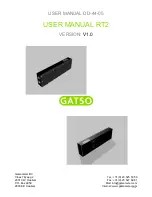
PRIMUS
R
660 Digital Weather Radar System
A28–1146–111
REV 2
Radar Facts
5-4
When the antenna is tilted downward for ground mapping, two
phenomena can occur that can confuse the pilot. The first is called ”The
Great Plains Quadrant Effect” that is seen most often when flying over
the great plains of central United States. In this region, property lines
(fences), roads, houses, barns, and power lines tend to be laid out in
a stringent north–south/east–west orientation. As a result, radar
returns from these cardinal points of the compass tend to be more
intense than returns from other directions and the display shows these
returns as bright north/south/east/west spokes overlaying the ground
map.
The second phenomenon is associated with radar returns from water
surfaces (generally called sea clutter), as shown in figure 5–3. Calm
water reflects very low radar returns since it directs the radar pulses
onward instead of backward (i.e. the angle of incidence from mirrored
light shone on it at an angle). The same is true when viewing choppy
water from the upwind side. The downwind side of waves, however, can
reflect a strong signal because of the steeper wave slope. A relatively
bright patch of sea return, therefore, indicates the direction of surface
winds.
AD–12056–R2@
WIND DIRECTION AT
SURFACE OF WATER
PATCH
OF SEA
RETURNS
REFLECTION
CALM WATER OR WATER WITH
SWELLS DOES NOT PROVIDE
GOOD RETURN.
CHOPPY WATER PROVIDES
GOOD RETURN FROM
DOWNWIND SIDE OF WAVES
Sea Returns
Figure 5–3
Содержание PRIMUS 660
Страница 1: ...AD 54257 ...
















































